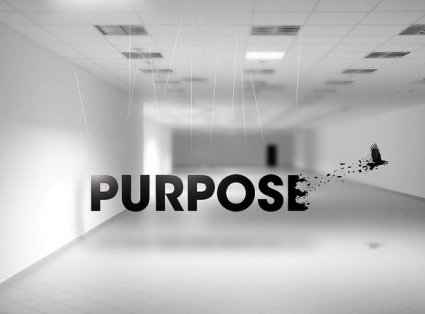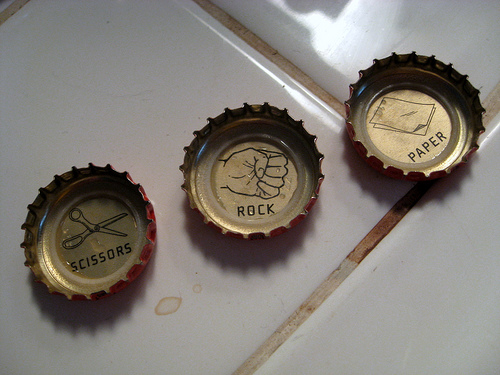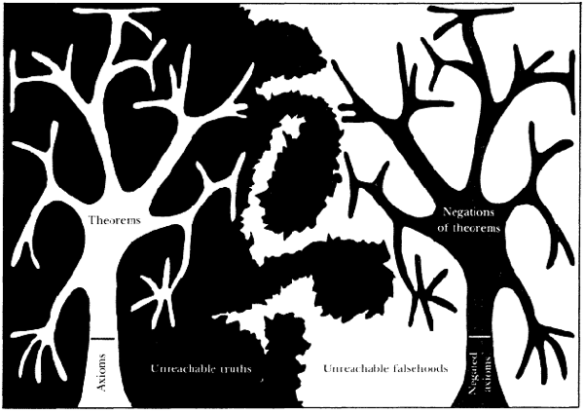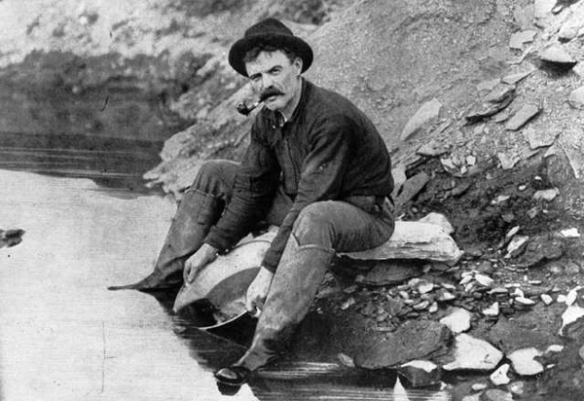
Source: Edenlifemag.com
Restart GTD: Blog Purpose
Hey!
The purpose of this blog might have been “Getting Started with Getting Things Done” except that Merlin Mann has been doing that at 43folders.com for 8 years already. I love Merlin’s idea of “getting started with getting things done” (note you can now pre-order Merlins’sINBOX ZERO at Amazon!) and use the “getting started” title repeatedly in teaching high school students, undergrads, MBAs, high school teachers, doctors, and ministers that cross my path. But getting started isn’t really the core issue I want to focus on in my blog.

Source: ScienceBlogs
Non-transitivity of information, Gödel’s Theorem, and Cul-de-sacs:
What I want to focus on is why people fall off the GTD wagon, what keeps them off the wagon, what keeps them from getting on the wagon in the first place. That is, the struggles of getting GTD practice to the point of GTD flow. The people I’ve had the most fun working with on GTD often call themselves “visual learners” or “tactile learners”. They listen to the Audible version of GTD that I buy them, get excited, and then do not make progress.
They often complain about how unreadable Getting Things Done is. Unreadable? Really? Unreadable? I read therefore I am. I can’t really understand why I’m hearing this repeatedly. I don’t agree with this evaluation, but I do accept the statement as data. Data that is trying to tell me something about information non-transititivity, about how different people read the same words and don’t get the same message. God has spent a lot of time giving me data about information non-transitivity.
At age 52, I’m no longer denying it (20s), being angry about it in my 30s, bargaining with it in my 40s. And thus I sit before you opening my GTD kimono.
You see, I’ve given over 50 copies of GTD away. 20 copies to the legal department of a large international company. Information non-transitivity eats the vast majority of these copies, and robs the receivers of GTD, from harvesting the stress relief, the flow, the delight of becoming neater and more organized than their spouses. The information is in the book, the book goes to the receiver, but the receiver never “gets” the information in the book. Non-transitivity.
In the three years I’ve been doing GTD and hearing the frustrations of people who can’t get the system out of the book and into their minds, I’ve begun to see a metaphor: glass. There is an invisible glass ceiling and invisible glass walls around the brains of people who can’t read and instantaneously translate GTD to action. The glass is between them and and the simple ecology of organizational tools available to them. They are inside the door of Apple’s NYC glass cube, but they can’t get down the stairs into the store!
I had the luckiest introduction to GTD short of having David Allen come over weekly and talk me through implementing. I had Ian Watson GTD jeddi and patent broker genius, poking and prodding me to read GTD, and then re-poking and re-prodding me to implement GTD. I think this kind of conversation between someone with sustained victory and the newly minted GTDer, can work magic.
Source: Shareaholic.com
What is the conversational magic? Hypothesis: GTD magic comes from sharing pointers, answering the legion of “resistance-by-over-thinking” questions with strategic taunts to “get results not more theories”, and just being there to talk to, help people magically stumble towards GTD victory. If you have loved and failed to implement GTD, you are my people.
The purpose of RestartGTD is enact conversational GTD magic. I’m starting the conversation by opening my GTD kimono. But I hope that people will post questions, gnarly questions, and answers, perspectives, tips-tricks-and-traps. And not the knee-jerk left-brained answers so common on blogs.
In informational non-transitivity situations, the opposite of a great truth, is another great truth. Gödel’s theorem overturned the turn-of-the-century movement in mathematics to unify all species of maths. Kurt Gödel, who was a back-row quiet member of the Vienna Circle, proved that formal systems are profoundly incomplete. That is, any formal system is incomplete in that there are truths that it cannot prove are true as well as falsities it cannot prove are false, and infinitely many of both.

Source: Godel, Escher, Bach and www.dalank.de
As a student at Michigan State, I had a philosopher of law (Lewis Zerby) as my mentor. Zerby studied under Gustav Bergman at Iowa. Bergman was another member of the Vienna Circle. My undergrad goal as a liberal arts outsider, guided by a liberal arts insider, was to unify all theories that I was learning in economics, business, electrical engineering, metaphysics, ethics, into one giant theory of life. A giant theory where everything was interconnected. In my doctoral program, I came across Gödel’s theorem and the idea of recursion (Gödel’s incompleteness proof was recursive). And I had to give up my simple black-vs-white perspective on knowledge.
But, in this collapse I was given the great gift of tough open-mindedness. Under the guidance of three giant brains: Steve Melnyk (Western Ontario), Jim Miller and Mark Whalon (both of Penn State) I stated reading voraciously and omnivorously in philosophy of science, in history of science, drilling into how a community of scientists who can’t get along personally, have been able to make progress and get results.
This was excellent training for implementing GTD, and for never giving up on off-the-GTD-wagon people. If you know you need GTD, and you can’t do GTD with someone else’s system. The answer is simple, roll your own system. The problem is, once someone “fails” in their own eyes at implementing GTD, they usually don’t find the simple answer.
Here is a favorite passage of mine from Francis Crick’s What Mad Pursuit:
What, then, do Jim Watson and I deserve credit for? If we deserve any credit at all, it is for persistence and the willingness to discard ideas when they became untenable. One reviewer thought that we couldn’t have been very clever because we went on so many false trails, but that is the way discoveries are usually made. Most attempts fail not because of lack of brains but because the investigator gets stuck in a cul-de-sac or gives up too soon. …
However, I don’t believe all this amounts to much. The major credit I think Jim and I deserve, considering how early we were in our research careers, is for selecting the right problem and sticking to it. It’s true that by blundering about we stumbled on gold, but the fact remains that we were looking for gold.
Francis Crick. What Mad Pursuit: A Personal View of Scientific Discovery (Kindle Locations 987-1000). Kindle Edition.

Source: www.gold-prospecting-equipment.net
So, RestartGTD.com seeks to provide a context where kindred minds, can interact, explore, prototype solutions, share GTD cross-fertilization pointers, and success lessons learned.
We GTDers get stuck in cul-de-sacs.

Source: Photographersgallery.com
But like Watson and Crick, we need to discard ideas (GTD system components that don’t work) and try new things. Any new GTD system component is better than using an older GTD system component that is not working. We GTDers can help one-another with this. We can provide outside objectivity, ideas to get one another unstuck from cul-de-sacs, simple order of battle step-by-steps, and encouragement. The strategic enemies of GTD are being stuck in cul-de-sacs, and information non-transitivity. The strategic tools to fight these enemies, are magical GTD conversations.
GTD Tool Ecology:
After the first flush of reading and implementing GTD, I attempted to replace my ecosystem of disorganized limping success with an electronic GTD monoculture. That is, I put my entire trusted system into OmniFocus on the Mac. As I completed entering all the data, recycling all the paper and pushed away from my desk, I had the GTD equivalent of the Willy Wonka Wonkavator ride of stress release.

Source: Philmorgan.org
But, there was this problem. I started avoiding sitting at my desk where OMNIFOCUS ominously awaited. Thus, two weeks into GTD, immediately after getting myself 100% on the wagon, I was in my first GTD cul-de-sac. You know you are off the wagon by one high contrast signal: procrastination. I was procrastinating, not doing. You can get off the Wonkavator now Bill.
The idea of an ecology or ecosystem of tools, specifically island biogeography, is a second GTD metaphor that has become important to me. In E.O Wilson’s famous experiment, all the species of insect were censused on three small islands off the coast of Florida. Then, the islands were covered with tarps and floral bromide was used to kill every species of insect on all three islands. Then, Wilson did periodic re-census of each island. The most telling piece of data from this experiment was that the number of species after the islands had reached equilibrium, was the same after floral bromide, as before. BUT THE SPECIES IN EQUILIBRIUM WERE ALL DIFFERENT.
The tools of GTD, the inboxes, the Evernotes, the Outlook mail clients, are like species. Each person coming to GTD is like an island after the floral bromide. The equilibrium set of GTD tools for each of us, is I think, idiosyncratic of who we are and how we’ve come to GTD.
David Allen implicitly recognizes that it does not matter which tools you use, what matters is that you have a system your brain trusts. Our brains don’t care about obedience to any one design of GTD tools, our brains care about getting results and spending as much of our life as possible, in flow.
Getting into GTD flow is about finding the ecology of tools in our work lives, that allow us to reach equilibrium. To, as tropical fish aficionados say get to a “pop” where our GTD fish tank is in stable equilibrium, so that we can introduce projects (fish) to our GTD system, and have the projects thrive.
If one true equilibrium set of GTD tools isn’t the point, the point is opportunistically discovering and testing tools to see how the tools help us maintain work flow. A second goal for this blog is for people to share the tools that work for them as well as the barriers they experience in achieving GTD flow.
What RestartGTD is not about:
What this blog will not be about is second guessing David Allen. I yield to no-one in admiration for what David Allen has done in his consulting and writing. He makes catalyzing consciousness look very easy, the ease belies a tremendous quantity of research, testing, and thinking. I can’t add to the GTD architecture, my goal is to improve GTD implementation.
When I was working at HP, I enacted an analogous embrace and extend process to the HP IP Legal architecture. A great architecture is about the best place to start in lighting a fire. HP went from 18th in US patenting before I stated embracing and extending, to 3rd in US patenting after.
I seek to embrace and extend David Allen by seeking to serve the willing seekers of GTD, who somehow can’t get past their own glass ceilings and walls. RestartGTD seeks to refine and refactor the GTD tool set, methodology, and principles, to release GTD’s potential to this seeker community.
bill meade, ph.d.
2012/1/3, updated 2012/9/22

Pardon me, this gets a bit rambly … I found this page by googling “Getting Things Done” and “unreadable”. I’ve never ever even had a pretend system for more than 2 days. But hitting midlife (plus) means that memory is failing me at the same time as my pursuits (career, personal and volunteering) have increased and I’ve hit a wall - wanting to do more things than, perhaps, I reasonably can. I need GTD more for my personal life — where I’m volunteered to the hilt and have many many other interests and pursuits that I don’t seem to be able to fit in among the administrative demands — than for my professional life … except email - I really want help with email. So, I’m halfway through the book and I get that things he says are incredibly sensible. But it’s so BORING. I keep waiting to get to the part where he actually says “Do this” … but he sort of says “Here are all the reasons to do this”. Even a few bullet points would help. I get the feeling the book could be summed up in a couple of charts and tables and I wouldn’t have to wade through the repetitive verbiage. (And I don’t get some of his metaphors about horizontal and vertical … Depends on how you perceive time and space, perhaps?)
So … as I’m reading, I’m thinking. OK - am I supposed to now write out ALL my projects? (He says 100 - I’m guessing I’ll have many, many more - I volunteer at 3 organizations and have a fair bit of responsibility at all of them and I’ve hit a wall where I’ve started dropping balls and have gotten tired of losing, as he says in a video, all this mental bandwidth). Then, after writing out these projects, do I write out the desired outcome for each. Then the next step for each? I’ll have to book all my vacation time to just get started …
But really, it’s just that the book is boring. I pick up an essential point and say “yes” and then read a dozen pages waiting for the next thing.
Oh, and the “system you can trust” thing. I have a house full of notebooks, pieces of paper, a computer full of files all over the place, an Evernote account full of things and a phone I can’t type on (i.e. I hate touch screens). And a hipster PDA which I just started again last week which I think I might actually be able to make work, but not as the trusted repository for 300 projects …
Meant to say at the end - hope this explains some of the non-transitivity of the book … I’m going to look at a few more videos and check out Merlin Mann some more, because I do think this approach will be helpful. But the book is … unreadable.
Alison!
Step 1: Stop Reading GTD
Step 2: Open your paperback of GTD to chapter 4. Take a pair of scissors, and cut the binding of the book.
Step 3: Put chapters 4 and after, in a bookshelf where you will find them in >1 year.
Step 4: go to my post on getting started with GTD in 28 steps: http://restartgtd.com/getting-started-with-getting-things-done-2014-in-27-steps/ and then cherry-pick the steps that sing to you.
Hope this helps!
bill meade
Aha! Figured it out - the book starts at Chapter 4. Page 85. I could have spent this Sunday actually beginning rather than trying to read the unreadable.
Bill,
I have been reading your blog from the very beginning but have never commented. I just wanted to say that the advice and content that you provide is really helpful. I am an on-again off-again implemented of GTD and your blog articles have helped me be more on than off. I also enjoyed reading about how much it helped you in your life. Finally, the tipping point that got me to actually post was the fact that you were a Spartan in a previous life. Go Green!
Bill — I found your website as I was trying to restart my own GTD process. I’m an engineer at a medium-sized company that has too many projects and not enough people-hours to get them done…a common refrain, I know. I’ve hit a wall in the past week with work that has fallen behind and other work that hasn’t gotten done because of misunderstandings borne of overload. When the immediate crisis is past I am back on the wagon. I hope your blog can keep me on there.
Thanks,
Tom
Hello! Just found your website via Twitter and it’s singing to me! I’m one of your people (also an overthinking PhD), 6 years falling on and off the GTD wagon (but at least I have a wagon, right?). And I can’t believe you referenced island biogeography! Song of the Dodo: Island Biogeography in an Age of Extinction by David Quammen is one of my ALL TIME favourite books.
Off to read the rest of your site …
Best wishes, Amanda
Im a third year engineering student who just discovered this blog and just started reading GTD. I will try to share my thoughts on my progress through its implementation and hopefully become able to challenge some of the ideas that you present. you know, just for fun.
alan
FANTASTIC! My experience with GTD has been heavy on “iterative discovery” as I’ve tried recommendations from the book, from people doing GTD, and as I began scanning for techniques that work through my mind’s new lens of GTD. Some things work well (“One idea = One piece of paper.” and “If you can do it in 2 minutes, just do it!”). But others (Tickler files) have just been too anachronistic to try. As I’ve moved through 3 years of testing and refining, I’ve become good at what I think of as the core skills of GTD, what David allen would call the 1,000 foot level. I’m still not doing “scorched earth” weekly reviews of every open loop in my life, but I am set up so I can do partial weekly reviews (of all hot stuff, but not of long term aspiration projects like percolating books). And this has worked well for me as I’ve reengineered my organization across my work life.
If you can, collect (or take) pictures of your desk before GTD. Pictures are gold for judging what you did when, and how far you’ve come. Check out my restartgtd blog post on my GTD Before/After at: https://restartgtd.wordpress.com/2011/12/29/gtd-journey-after/ to see the pictures. When I tell students that “GTD is great!” the words mean nothing. But when I show them the before/after pictures, they burst out with questions about why I was messy to begin with (after a PhD and 25 years of industry experience) and whether I’m tricking them with the after pictures. You know, just cleaning up the desk to take the picture. So, having snap shots will not only help you judge your own progress, but it will give you credibility with people who you choose to share GTD with, in the future.
bill meade
Thank you for starting this blog! I’m on my 3rd go round of GTD and hope that it will stick this time. I’ve implemented parts of it but never enough to have a fully trusted system. I would love to hear about how you use Evernote for reference filing. Right now I use Things to manage my projects and next actions and Evernote for reference files and my digital project files. Its going ok but I’m struggling a bit with Evernote as I think I am only scratching the surface of its features. I did spring for the premium version, the storage space, PDF search, and versioning were must have features for me.
Working up a post focused on Evernote. Here is an overview of how I’m using Evernote.
The last 1/3 of THE GTD JOURNEY, BEFORE AND AFTER covers Evernote in some detail.
I think Evernote is a HUGE deal for GTDers. It provides weak and strong forms of gravity to keep us in the GTD orbit. In the weak form of attraction, being able to clip internet resources keeps one using Evernote every day, growing the gravity of Evernote in the information solar system. The gravity is the strong form of GTD attraction. Once you have the “Aha!” that you can find everything you need, rapidly, via Evernote, you are changed. David Allen is leery of technologies, he’s concerned with the logical processes of GTD, not the technically instantiated processes. But, I’m not above loving technology just because it is helping me today. I may switch, but for now, general reference filing is Evernote’s game to loose.
[email protected]
Having first started in 2006, semi-restarted every so often, and now full-fledgedly restarting in December (with OmniFocus), I’ll be looking forward to this blog.
Jean,
I hope this is a welcome home. Whatever glass ceilings or walls you hit with implementing GTD, I want to catalyze discussion about them on this blog. In my perusing of GTD blogs, the all seemed to avoid personality. The tools would go so deep, and then the bloggers pull back and close their kimonos. Like in the GTD book where David Allen hides his faith issues and what he’s really doing with that someday maybe list flute! Inquiring GTDers want to know. So, the more personality on this platform, the better I say.
Welcome!
[email protected]
This is a fantastic blog!
Giovani